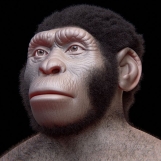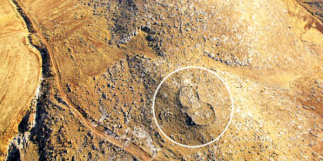
Sometimes I wish I'd become an archaeologist. Imagine discovering something like, oh, I don't know, Naboth's vineyard from 1 Kings.
Here at BreakPoint, we love to tell you about the ways that archaeology is confirming the biblical narrative, and, judging by the response, you love to hear about it.
Well, the latest discovery is one of the coolest yet. It's possible confirmation of one of the most memorable stories in the Bible: Ahab and Naboth's vineyard.
First Kings 21 tells the story of Naboth the Jezreelite who had the misfortune to own a vineyard near king Ahab's palace.
Ahab coveted Naboth's vineyard and offered to either buy it outright or exchange it for what he deemed a "better vineyard." When Naboth, in keeping with the Law of Moses, refused, Ahab sulked, "lay down on his bed and turned away his face and would eat no food." You gotta chuckle at Ahab's reaction. My goodness.
At any rate, his Phoenician wife, Jezebel, then hatches a successful plot to kill Naboth and seize his land. But their triumph is short-lived: Elijah pronounces God's judgment on them and their dynasty, which will end in a gruesome fashion.
Since 2012, a team led by Norma Franklin of the University of Haifa and Jennie Ebeling of the University of Evansville in Indiana have led an excavation in the Jezreel Valley, which lies south of our Lord's native south Galilee.
It's a region that figures prominently in the Bible, especially the Old Testament. It's where Gideon defeated the Midianites and the Amalekites in the book of Judges. It's where Meggido, from which we get the word "Armageddon," is located.
And it's the site of the vineyard Ahab coveted.
Five years ago, Franklin and her colleagues, using what's known as "LiDAR," a surveying "method that measures distance to a target by illuminating that target with a pulsed laser light," discovered "several features that had remained hidden for centuries." These features suggested the presence of an "early winery installation."
Excavation revealed "several wine and olive presses, including the largest ancient winepress in Israel found to date." They also found "over 100 bottle-shaped pits carved into the bedrock," which Dr. Franklin theorizes were used to store wine.
How did they know where to look in the first place? Well, they used the biblical text itself. Writing in Biblical Archeology Review, Franklin said that the details provided in the account of Naboth and the subsequent fall of Ahab's dynasty at the hands of Jehu provided "valuable information regarding the vineyard's location."
In fact, it was the correspondence between the physical evidence and the biblical account that led Franklin and her colleagues to ask if they found evidence of Naboth's vineyard.
Her answer is a lightly-qualified "yes." As she told Breaking Israel News, "the story as described in the Bible quite probably could have occurred here in the Jezreel."
Stories like this should not come as a surprise. A year ago, John Stonestreet told you about evidence that lent historical credence to the Bible's account of Jehu and the fall of Ahab's dynasty: a toilet used to desecrate what the Bible calls "the high places." As 1 King 10 says, Jehu "demolished the pillar of Baal, and destroyed the temple of Baal, and made it a latrine to this day."
As we never tire of telling you, "the Bible is the best-attested book of antiquity. Nothing else comes close. That's as it should be because our faith is firmly rooted in history, not some 'once upon a time.'"
And that's something we can say with complete certainty.
Originally posted at breakpoint.org
From BreakPoint. Reprinted with the permission of the Colson Center for Christian Worldview. All rights reserved. May not be reproduced or distributed without the express written permission the Colson Center for Christian Worldview. "BreakPoint®" and "The Colson Center for Christian Worldview®" are registered trademarks of The Colson Center for Christian Worldview.





















